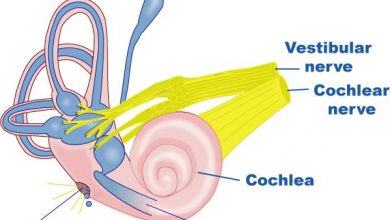Why Chronic Ankle Instability Should Be Treated by a Foot and Ankle Specialist

Ankle injuries seem minor until they turn into a long-term problem. A sprain that never fully heals can lead to ongoing instability, affecting balance, mobility, and overall joint health. Ignoring the signs can cause more damage over time, making professional care essential. Seeing a foot and ankle specialist ensures the right diagnosis and treatment plan to restore stability and prevent further complications.
Untreated Instability Can Lead to Repeated Ankle Sprains and Long-term Damage
An unstable ankle doesn’t just feel weak—it increases the risk of recurring sprains. Each time the ligaments fail to provide proper support, the risk of reinjury grows. What starts as a single sprain can turn into a cycle of frequent twists, each one stretching and weakening the ligaments further. Without intervention, this instability can make simple activities like walking on uneven surfaces or stepping off a curb dangerous.
Long-term damage from repeated ankle sprains isn’t limited to pain or weakness. Over time, chronic instability can lead to ligament laxity, meaning the ligaments lose their ability to hold the joint in place. This puts additional stress on the surrounding bones and muscles, leading to alignment issues, joint degeneration, and even nerve irritation. A foot and ankle specialist near me can provide targeted treatments to strengthen the ligaments and restore stability before the damage becomes irreversible.
A Specialist Can Accurately Diagnose Underlying Structural Issues
Not all ankle instability stems from weak ligaments alone. Some cases involve misalignment of the bones, cartilage damage, or even unnoticed fractures that contribute to ongoing weakness. A foot and ankle specialist has the expertise to identify these underlying issues with advanced imaging and clinical assessments. Without a proper diagnosis, treatment efforts may focus on the wrong area, leading to prolonged discomfort and repeated injuries.
When structural issues go undetected, even the strongest rehabilitation efforts won’t fully resolve the problem. A specialist evaluates not just the ligaments but the overall mechanics of the ankle joint. Identifying problems like bone spurs, joint impingements, or tendon damage ensures a treatment plan that addresses the root cause rather than just the symptoms. This level of precision can mean the difference between temporary relief and lasting recovery.
Chronic Instability Can Cause Joint Degeneration and Arthritis over Time
An unstable ankle doesn’t just affect movement—it accelerates wear and tear on the joint. Without proper support, the bones grind against each other in ways they shouldn’t, leading to cartilage breakdown. Over time, this repetitive stress increases the risk of arthritis, causing chronic pain, stiffness, and limited range of motion. Many people don’t realize how quickly instability can contribute to joint degeneration until it’s too late.
Arthritis caused by untreated instability can make even the simplest movements painful. The longer the joint remains unstable, the more damage occurs, making treatment more complex. A foot and ankle specialist near me can help prevent this progression by stabilizing the joint early. Whether through bracing, physical therapy, or surgical intervention if necessary, specialists ensure that the ankle remains functional and pain-free for years to come.
Rehabilitation and Strengthening Require Expert Guidance for Effective Recovery
Recovering from chronic ankle instability isn’t just about rest—it requires targeted rehabilitation. Strengthening the muscles and retraining the ligaments takes time, and doing it incorrectly can lead to further problems. A foot and ankle specialist tailors rehabilitation programs to each patient’s needs, ensuring exercises focus on both strength and stability. Without expert guidance, recovery can be inconsistent, leaving the ankle vulnerable to reinjury.
Rehabilitation doesn’t stop at exercises. Specialists incorporate balance training, mobility work, and proprioception exercises to restore full function. This approach ensures the ankle regains its ability to respond to sudden movements and uneven surfaces without giving way. Attempting to strengthen the ankle without professional input can lead to imbalances, compensations, and incomplete recovery, making expert care a critical part of the healing process.
Improper Treatment May Result in Poor Balance and Mobility Issues
An unstable ankle affects more than just the joint itself—it throws off the body’s entire balance system. Over time, the body compensates for instability by shifting weight to other joints, leading to hip, knee, or lower back pain. Poor balance increases the risk of falls and injuries, making everyday activities more difficult. Treating ankle instability improperly or delaying care can have consequences that extend far beyond the ankle joint.
A foot and ankle specialist near me understands how instability affects overall biomechanics. Proper treatment not only restores strength to the ankle but also improves balance and coordination. Addressing these issues early prevents long-term mobility problems and helps patients regain confidence in their movement. By restoring stability through expert treatment, patients can move freely without the constant fear of rolling their ankle again.
Persistent Ankle Instability Can Impact Daily Activities and Sports Performance
Chronic ankle instability doesn’t just affect athletes—it impacts anyone who wants to stay active. Walking, running, and even standing for long periods become more difficult when the ankle lacks support. For athletes, instability can lead to performance decline, slower reaction times, and increased injury risk. Even for non-athletes, simple tasks like climbing stairs or carrying groceries can become more challenging.
A foot and ankle specialist provides personalized care to restore full function, allowing individuals to return to their normal activities without limitations. Whether through physical therapy, bracing, or surgical options, specialists develop a plan that fits each patient’s lifestyle. Ignoring persistent instability can mean giving up favorite activities, but with the right treatment, movement becomes natural and pain-free again.




